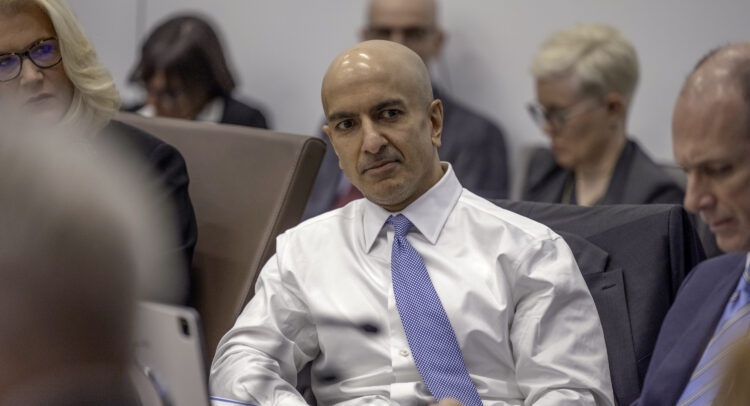In a recently published essay, Minneapolis Federal Reserve President Neel Kashkari suggests the possibility of further interest rate tightening. The essay, which appeared on the Minneapolis Fed website on May 7th, highlights the dilemma faced by the U.S. central bank, with inflation persisting well above its 2% target. While Fed Chair Jerome Powell advocates patience and awaits additional data, Kashkari raises concerns that the current policy may not be sufficiently restrictive. His essay elaborates on these concerns, making it imperative for investors to consider the key points outlined below.
Policy Remains Unchanged Amid Inflation Resilience
Inflation has demonstrated unexpected resilience this year, holding steady at around 2.7%. Although this is still too high for the Fed’s comfort, it hasn’t been high enough to prompt immediate action. The central bank is presently maintaining rates within a range of 5.25% to 5.5%, a stance upheld since July 2023. Powell remains optimistic that this policy will eventually curb inflation, though Kashkari expresses less certainty.
Current Policy Not As Tight as Intended
In the essay, Kashkari argues that recent economic indicators, such as a resilient housing market and ongoing robust demand, indicate that the Fed’s policy may not be as restrictive as intended. His concern is that inflation could settle at a much higher, 3% level, requiring further monetary tightening. The Fed President highlights a potential disconnect between the Fed’s perception of its policy stance and its actual impact on the economy. For instance, despite elevated mortgage rates, the rebounding housing market suggests that the Fed’s policy has not curbed demand to the extent anticipated.
Growth vs. Inflation Trade-Off
Kashkari’s perspective highlights the challenging decision the Fed faces. Bringing inflation down to 2% might require suppressing economic growth, potentially by implementing higher interest rates. This creates a difficult trade-off. The Fed must weigh the decision to lower inflation by a few tenths of a percentage point against the backdrop of slower economic growth and potentially increased unemployment.
Officials Committed to 2% Target, But Timeline Unclear
Despite the current debate, the Fed remains resolved in its commitment to achieving the 2% inflation target. However, there’s no set timeline for achieving the goal. The most recent projections suggest inflation might reach 2% by the end of 2026, though this could change depending on new data and forecasts released in June.
Waiting for More Data vs. More Action
The Fed’s current strategy hinges on waiting for further data to assess the stickiness of inflation. Officials will monitor factors like job market conditions, inflation expectations, and their own success in the fight against inflation. While Powell favors this approach, Kashkari’s analysis suggests the Fed might need to take a more active stance, potentially raising interest rates if inflation remains stubbornly high.
The Fed’s current strategy depends on gathering more data to assess the stickiness of inflation. Officials will closely watch factors like job market conditions, inflation expectations, and their own success in controlling inflation. While Powell supports this wait-and-see approach, Kashkari suggests that the Fed may need to take proactive measures, such as raising interest rates.
Key Takeaway
The Fed is navigating a complex situation with inflation stuck above its target. While policymakers like Powell advocate for a wait-and-see approach, Kashkari’s concerns raise the possibility of tighter monetary policy if inflation doesn’t show clear signs of falling toward the Fed’s desired level. The upcoming June 11-12 meeting will be crucial as the Fed releases updated economic projections and potentially revises its policy path.
















